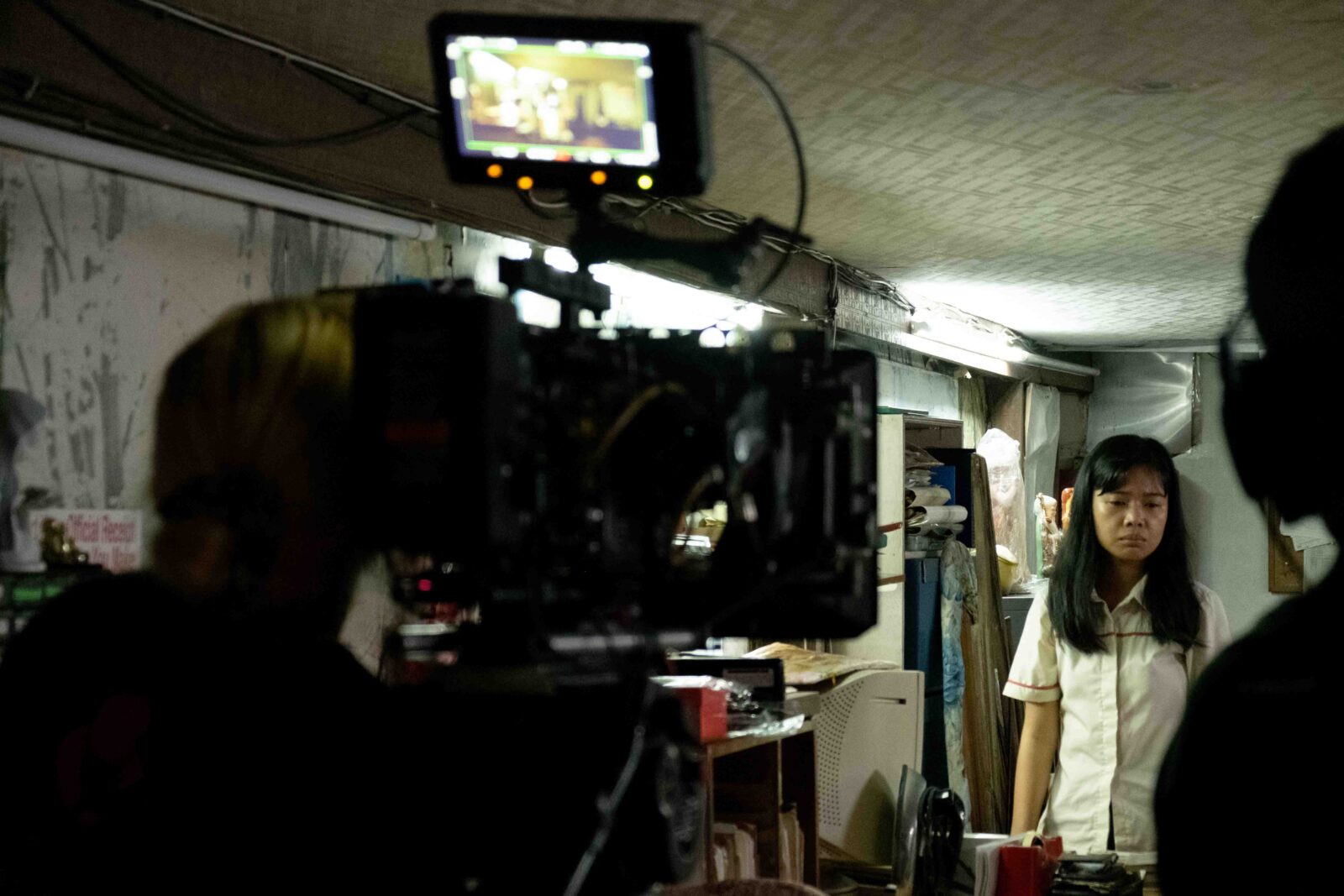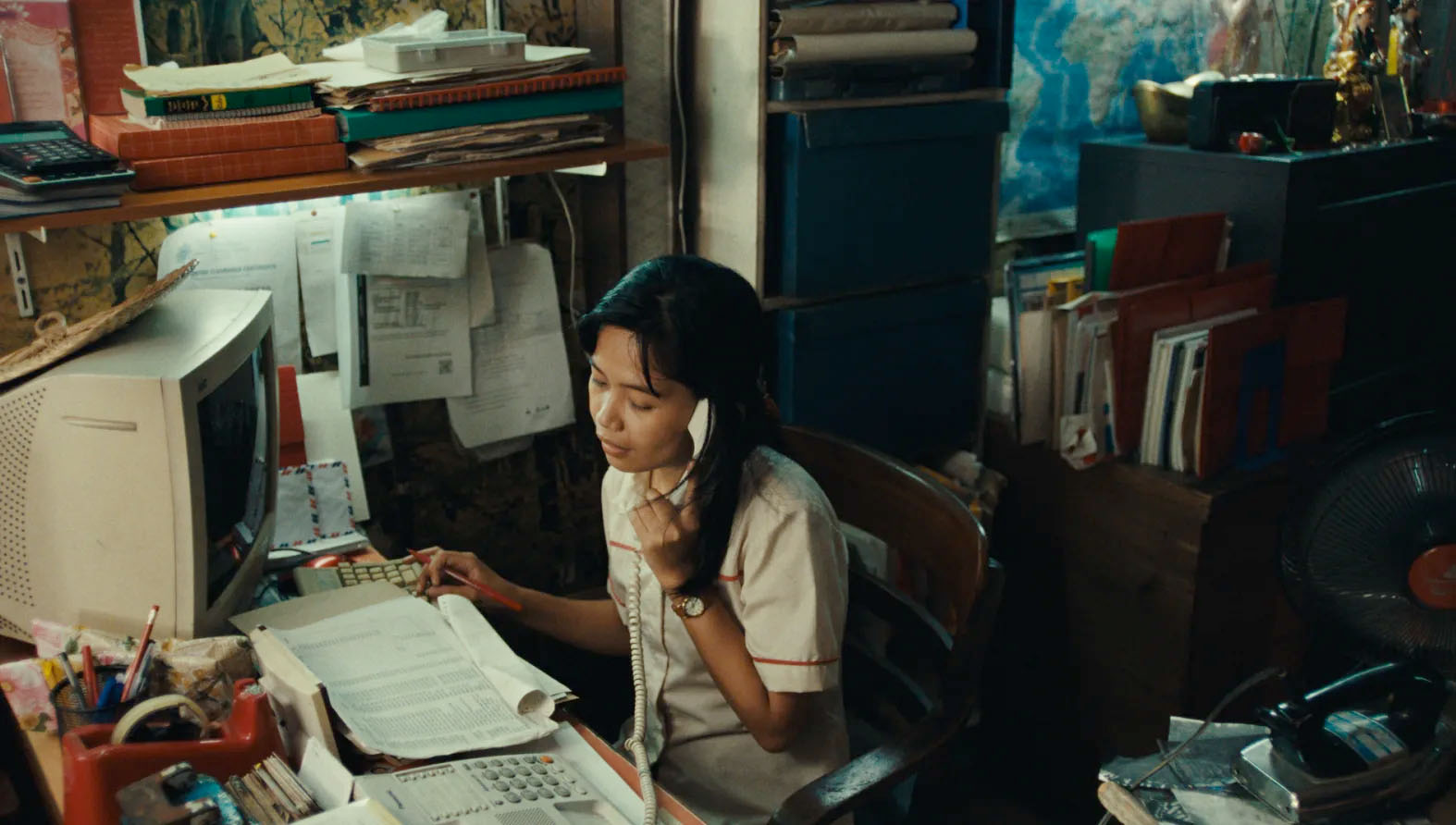The Truth of An Illusion
Sam Manacsa on Cross My Heart And Hope To Die
Filipino filmmaker Sam Manacsa unveils the thought process behind her most recent short, which premiered at the 80th Venice Film Festival last September as the only Shoutheast Asian entry in the short film competition.

“For me, a film is a call for action,” says Filipino filmmaker Sam Manacsa who returns to stage ordinary Filipino lives with meticulous care in her most recent short, Cross My Heart and Hope to Die.
Mila, the film’s protagonist, is a young woman who escapes her own dreary reality as an underpaid office assistant through romantic escapism. What follows is an unexpected tale of disillusionment and trauma. During a conversation at PÖFF Shorts, Manacsa unveiled the thought process behind this captivating film.
What led you to stage this tale of murder and desire?
The story is based on the experience of someone I know: a young woman who witnessed the murder of her boss and was told to clean up the mess. In the Philippines, when a murder like this happens, it’s up to the owner of the place to tidy up. They usually ask someone they know for safety reasons…
Mila embodies a composite of experiences I came to understand through those around me, including myself and the person who actually lived through the event. Her story speaks to the collective experience of female workers in the Philippines, and it’s easy to sympathise with Mila because no one deserves to go through such a traumatic experience. I wonder how she could have avoided it, but also realise how difficult it would be to escape this kind of institutional problem. The film is my attempt to understand how that real-life event unfolded.
I also faced the difficult act of asking for my salary and not getting it in time. It’s evident through the stories about working conditions in the Philippines that one can’t sustain a decent living with what’s given. So it took me several years to work on the story and to feel that both reality and fiction could blend together.
The story, like the title, juxtaposes romance and death: a guy keeps calling Mila to express interest and care, only to be revealed as the murderer later.
In the Philippines, there are late-night radio programs you can call to find a date.
So it sparked the idea that a phone call of desire can become the catalyst for the murder: Mila wanting to escape her misery and the guy simply craving money. As the story progresses, Mila doesn’t get what she truly yearns for, and that happens a lot to people who fall in love…
The film opens with a daunting five-minute long shot showing Mila trying to suffocate herself, which immediately throws us into her oppressive daily reality. Why such an opening?
I’ve been using long, static shots since my previous film, associating them with memory. When I hear anecdotes from people, I always envision myself being there with them. These shots are a means for me to emphasise with my characters, doing my best to be there for them.
We used wide shots for most scenes, keeping tighter shots for pivotal moments, such as when Mila receives the man’s final call asking to meet up at the restaurant [before the murder] and during the final scene when she cleans up the blood. The close-ups capture crucial emotional peaks. For instance, Mila feels the greatest hope when the man finally asks to meet up, and we have to be physically closer to her feelings. For me, that is the climax of the whole story.
Ironically, the murderer in this story is the only person who shows real sympathy towards Mila…
I created him to embody what Mila needs at that moment in her life. I wanted to make the illusion of his interest in her believable, contemplating his actions through Mila’s perspective: why would she even think of him when she has other problems and concerns in her life? Despite not knowing her, he invests time and effort in caring for her, even buying her food during late shifts. But this is a misleading feeling that is later revealed as unreal.

Cross My Heart and Hope To Die
In the final scene that shows Mila cleaning up the crime, he calls her again, and we understand that his gestures of interest were part of his murder plot. Mila then hangs up and turns the music up.
The ending was key for me. It’s the moment Mila realises that everything that has been happening in her life, including the murder, has been weighing on her. I wanted to communicate this overwhelming feeling through the sound design: the music on the radio mingles with the repetitive phone ringing while her friend is crying out loud in the background.
I believe the guy really has sympathy for her… And ultimately, she already knows who he is, but he calls again to talk to her. When Mila receives this kind of attention, she becomes even more perplexed about why he continues to complicate and confuse her feelings. It’s an impossible situation for her to grasp.
In If People Such as We Cease to Exist, your previous film, the female protagonist also navigates tough circumstances. Are you attracted to a particular kind of story or character?
Through those stories of women, I questioned the “how” and “why” behind things. It’s difficult to find an answer or a way to resolve these inquiries for myself. To me, these stories can be a call for action or help. I see myself developing a feature project from the two shorts I’ve made about navigating grief and trauma from a female perspective.
Many impressive short films produced in the Philippines have roamed the international festival circuit in recent years. Is a fresh wave of Filipino filmmakers on the rise?
There has been an established independent cinema scene in the Philippines for a while. The nation’s film industry is vibrant, and people work in TV, commercials and pursue their own projects. If you have the support system and the emotional calling to make a film, bringing a project to life isn’t so challenging. However, independent cinema doesn’t receive the visibility of mainstream Hollywood films or productions by established houses, and finding venues to screen the many (short) films produced can be challenging.
Luckily, the current environment differs from when I graduated from film school in 2016. Back then, many, including myself, weren’t aware of the significance of festivals. I didn’t grasp the importance of being accepted into Clermont-Ferrand… Nowadays, there’s much more awareness due to increased online exposure of festivals and opportunities for Filipino filmmakers. More people now understand that there are more than just A-list festivals, including Asian-centric ones, and that it’s a matter of finding the right place for your film.
